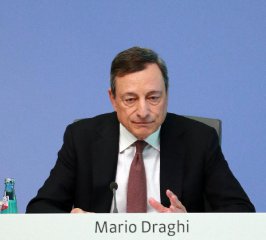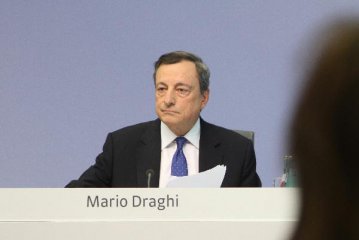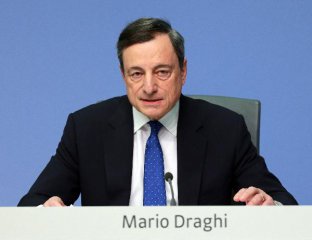
Draghi says QE makes world more resilient.
Quantitative easing and other non-standard monetary policies have achieved success on both sides of the Atlantic, and the highly debated policy makes the world more resilient, said European Central Bank (ECB) President Mario Draghi at opening speech for the sixth Lindau Nobel Economics Laureate Meetings from August 23-26. Draghi stressed that provided the ECB is willing to explore non-standard policy avenues, they can continue pursuing their price stability mandates even in the most adverse circumstances.
Draghi reiterated the effectiveness of non-standard monetary policy. In his view, non-standard monetary policy both in the euro area and in the US has effectively supported the crumbling economy at a critical moment. “Policy actions undertaken in the last ten years in monetary policy and in regulation and supervision have made the world more resilient.” He said, “but we should continue preparing for new challenges.”
The ECB launched quantitative easing (QE) policy since March 2013, mainly via large-scale purchases of sovereign bonds. It is expected to purchase 2 trillion euros of bonds by the end of this year. Draghi explained that as short-term interest rates approached the effective lower bound, central banks on both sides of the Atlantic undertook a number of unconventional measures aimed at influencing the whole constellation of rates. Forward guidance helped guide market expectations of future short-term rates. QE involved direct intervention by central banks in markets through large scale asset purchases to influence the yield curve beyond the very short term. Large-scale asset purchases can help financial institutions ease leverage constraints and increase investors’ risk-bearing capacity, leading to a portfolio rebalancing towards risky assets and to strengthened lending activity for banks.
But he also said that gaps in understanding the relatively new non-conventional monetary policy still remain. Some critics said that QE will eventually result in huge asset bubble. It not only helps rich classes that already own huge assets but also punished risk-averse depositors.
Some European central bank governors argued that the ECB should put an end to QE as soon as possible. German central bank chief Weidmann said on August 23 local time that the ECB should quickly end asset buys next year as the outlook does not warrant the extension of its bond purchase scheme. Weidmann said that he was also opposed to making technical changes to the programme, arguing they would lead to negative consequences.
Currently, as the euro zone economy picks up gradually, the global market begins highlighted on the timing for QE withdrawal. The upcoming annual meeting of central bank held in Jackson Hole will be an important window to catch a glimpse of the ECB’s actions to take in September as well as an important reference variable for the inflation data for the euro zone in the next two months. The Wall Street Journal noted in an article that the inflation across the globe is low, which means that world's major central banks can take it easy to adopt curtailing stimulus. In face of the unfavorable global economic outlook in the past few years, central bank officials were all thinking about how to controlling risk. But now the upward economy will make this year’s meeting more relax.
In addition, the ECB decided at its last monetary policy meeting to maintain its loose monetary policy unchanged. The signal delivered by Draghi shows that the ECB might pave the path for the progressive withdrawal of QE at the September monetary policy meeting. Draghi said that as the ECB is still facing a lot of uncertainties, more information is needed. He hoped that the ECB was forced to make decisions without sufficient information. At present, the market expects that the ECB will gradually withdraw QE starting from 2018, and begin to raise interest rates in the end of 2019.
Translated by Coral Zhong
























Latest comments